115 events in 2020
-
External Event
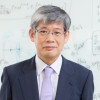
Tetsuo Hatsuda x Koji Hashimoto x Aiko Teranishi "Science for the Future"-"The Usefulness of Useless Knowledge" (University of Tokyo Press) Commemorative Publication
October 10 (Sat) at 15:00 - 17:00, 2020
Tetsuo Hatsuda (Program Director, RIKEN Interdisciplinary Theoretical and Mathematical Sciences Program (iTHEMS))
Koji Hashimoto (Professor, Department of Physics, Osaka University)
Aiko Teranishi (President and CEO, indigo.inc)Dr. Tetsuo Hatsuda, iTHEMS Program Director, published "The Usefulness of Useless Knowledge" in this July by the University of Tokyo Press. This book is a collection of essays by Abraham Flexner, the first director of the Institute for Advanced Study in Princeton, USA, and Robbert Dijkgraaf, the current director. To celebrate the publication of this book, a talk event will be held at Bookstore B&B. For more information and to book the event, please visit the related links (in Japanese).
Venue: via Zoom
Event Official Language: Japanese
-
Lecture

Nara Women's University, Faculty of Science, Continuous Lecture Series: Forefront of Modern Science - Frontiers in Mathematics, Astronomy, Physics, Biology and Computation
October 2 (Fri) at 16:20 - 17:50, 2020
Tetsuo Hatsuda (Program Director, RIKEN Interdisciplinary Theoretical and Mathematical Sciences Program (iTHEMS))
Yuka Kotorii (Visiting Scientist, RIKEN Interdisciplinary Theoretical and Mathematical Sciences Program (iTHEMS) / Associate Professor, Mathematics Program, Graduate School of Advanced Science and Engineering, Hiroshima University / Visiting Scientist, Mathematical Analysis Team, RIKEN Center for Advanced Intelligence Project (AIP))
Shigehiro Nagataki (Deputy Program Director, RIKEN Interdisciplinary Theoretical and Mathematical Sciences Program (iTHEMS) / Chief Scientist, Astrophysical Big Bang Laboratory, RIKEN Cluster for Pioneering Research (CPR))
Makiko Nio (Senior Scientist, Quantum Hadron Physics Laboratory, RIKEN Nishina Center for Accelerator-Based Science (RNC))
Ryosuke Iritani (Research Scientist, RIKEN Interdisciplinary Theoretical and Mathematical Sciences Program (iTHEMS))
Ai Niitsu
Shigenori Otsuka (Research Scientist, RIKEN Interdisciplinary Theoretical and Mathematical Sciences Program (iTHEMS) / Research Scientist, Data Assimilation Research Team, RIKEN Center for Computational Science (R-CCS))
Emi Yukawa (Assistant Professor, Department of Physics, Faculty of Science Division I, Tokyo University of Science)Venue: Changed to Zoom
Event Official Language: Japanese
-
Seminar

TQFT, integrable lattice model, and quiver gauge theories
October 2 (Fri) at 16:00 - 18:00, 2020
Toshihiro Ota (Student Trainee, RIKEN Interdisciplinary Theoretical and Mathematical Sciences Program (iTHEMS) / Ph.D. Student, Graduate School of Science, Osaka University)
1st part (math): In physics literature, “lattice models” appear quite often as mathematical models of physical systems, e.g. Ising model, vertex models, lattice gauge theory. The aim of the 1st part is to introduce ‘what is (T)QFT,’ ‘what is lattice model,’ and ‘what does integrability mean’ in the language of mathematics. In turn, they will play a crucial role in the 2nd part of my talk. I also hope that this will lead to a good exchange among us, especially between physicists and mathematicians. 2nd part (physics): In the 2nd part, I would like to explain where an integrable lattice model may come from, especially for people in the physics background. I will show a certain class of integrable lattice models is realized by Wilson-’t Hooft lines in 4d quiver gauge theories. I will also explain a bit how these gauge theories are constructed from brane configurations in string theory. String dualities allow us to relate the original 4d setups to 4d partially topological Chern-Simons theory, which is a partial TQFT and generates integrable lattice models. Please contact Keita Mikami's mail address to get access to the Zoom meeting room.
Venue: via Zoom
Event Official Language: English
-
Seminar
The Uchuu Simulations: Data Release 1 and Dark Matter Halo Concentrations
October 1 (Thu) at 14:00 - 15:00, 2020
Tomoaki Ishiyama (Associate Professor, Institute of Management and Information Technologies)
We introduce the Uchuu suite of large high-resolution cosmological N-body simulations. The largest simulation, named Uchuu, consists of 2.1 trillion dark matter particles in a box of 2.0 Gpc/h. The highest resolution simulation, called Shin-Uchuu, consists of 262 billion particles in a box of 140 Mpc/h. Combining these simulations we can follow the evolution of dark matter haloes (and subhaloes) spanning from dwarf galaxies to massive galaxy cluster hosts. We present basic statistics, dark matter power spectra and halo (subhalo) mass function, to demonstrate the huge dynamic range and superb statistics of the Uchuu simulations. From the analysis of the evolution of the power spectra we conclude that our simulations are accurate enough from the Baryon Acoustic Oscillations up to very small scales. We also provide parameters of a mass-concentration model, which describes the evolution of halo concentrations, that reproduces our simulation data within 5% error for haloes with masses spanning nearly eight orders of magnitude at redshift 0
Venue: via Zoom
Event Official Language: English
-
Lecture
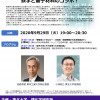
Public Lecture : Math meets Quantum Materials
September 29 (Tue) at 19:00 - 20:30, 2020
Hidetoshi Nishimori (Senior Visiting Scientist, RIKEN Interdisciplinary Theoretical and Mathematical Sciences Program (iTHEMS) / Specially Appointed Professor, Tokyo Institute of Technology)
Tomoki Ozawa (Visiting Scientist, RIKEN Interdisciplinary Theoretical and Mathematical Sciences Program (iTHEMS) / Associate Professor, Advanced Institute for Materials Research (AIMR), Tohoku University)Public Lecture "Math meets Quantum Materials" for high school students and above will be held. The lecture will introduce the latest topics in mathematics and physics, such as topology and quantum computers, in an easy-to-understand manner. For more information and to register for the event, please click on the related links.
Venue: via Online
Event Official Language: Japanese
-
Workshop
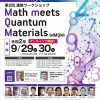
The Second Tohoku University - RIKEN Joint Workshop: "Math Meets Quantum Materials"
September 29 (Tue) - 30 (Wed), 2020
Hidetoshi Nishimori (Senior Visiting Scientist, RIKEN Interdisciplinary Theoretical and Mathematical Sciences Program (iTHEMS) / Specially Appointed Professor, Tokyo Institute of Technology)
Tomoki Ozawa (Visiting Scientist, RIKEN Interdisciplinary Theoretical and Mathematical Sciences Program (iTHEMS) / Associate Professor, Advanced Institute for Materials Research (AIMR), Tohoku University)
Ching-Kai Chiu (Senior Research Scientist, RIKEN Interdisciplinary Theoretical and Mathematical Sciences Program (iTHEMS))
Ryusuke Hamazaki (Senior Research Scientist, RIKEN Interdisciplinary Theoretical and Mathematical Sciences Program (iTHEMS) / RIKEN Hakubi Team Leader, Nonequilibrium Quantum Statistical Mechanics RIKEN Hakubi Research Team, RIKEN Cluster for Pioneering Research (CPR))
Kyosuke Adachi (Special Postdoctoral Researcher, RIKEN Interdisciplinary Theoretical and Mathematical Sciences Program (iTHEMS) / Special Postdoctoral Researcher, Nonequilibrium Physics of Living Matter RIKEN Hakubi Research Team, RIKEN Center for Biosystems Dynamics Research (BDR))
Christopher Bourne (Visiting Scientist, RIKEN Interdisciplinary Theoretical and Mathematical Sciences Program (iTHEMS) / Assistant Professor, Advanced Institute for Materials Research (AIMR), Tohoku University)The second Tohoku University - RIKEN joint workshop, entitled "Math Meets Quantum Materials," takes place from September 29 - 30. Tohoku University and RIKEN have been holding a series of joint workshops based on the agreement on collaboration and cooperation signed in 2019. The second workshop focuses on collaboration in the fields of mathematical sciences and quantum materials; two fields that have significantly merged in recent years. Like topological materials, which are discovered using the mathematical concept of topology, materials science is currently evolving from the conventional way of finding materials. Instead of developing materials with good properties through numerous experiments, materials science is increasingly finding materials using mathematical predictions. This workshop will discuss these latests developments and related topics. Although some lectures will take place in Japanese, the majority of talks will be in English. The deadline for registration is Monday, September 28. For more information, please click on the relevant link.
Venue: via Online
Event Official Language: English
-
External Event
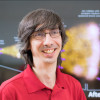
Fast Radio Bursts: a cosmic mystery
September 28 (Mon) at 10:30 - 11:00, 2020
Don Warren (Research Scientist, RIKEN Interdisciplinary Theoretical and Mathematical Sciences Program (iTHEMS))
On Monday morning, iTHEMS researcher Don Warren will give a public talk on fast radio bursts. He will describe this cosmic mystery, and reveal how impatient Australians play an important role in the story. This talk is part of the global Stream You series, hosted by National Geographic and Nerd Nite. Don’s talk begins at 10:30am, but there will be three talks before his starting at 9:00am. To watch Don’s talk, or any of the others, visit facebook.com/nerdnite on Monday and look for the YouTube link.
Venue: via Online
Event Official Language: English
-
External Event
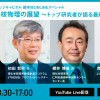
Perspective of nuclear physics in the 21 century
September 27 (Sun) at 13:30 - 17:00, 2020
Tetsuo Hatsuda (Program Director, RIKEN Interdisciplinary Theoretical and Mathematical Sciences Program (iTHEMS))
Hiroyoshi Sakurai (Director, RIKEN Nishina Center for Accelerator-Based Science (RNC))
Naohito Saito (Director, J-PARC Center)
Takaaki Kajita (Director, Institute for Cosmic Ray Research (ICRR), The University of Tokyo)世界最先端の日本の原子核物理研究を行う4施設の牽引者がそれぞれリレー方式で講義を行います。21世紀の原子核物理学の潮流といえる、重力波や中性子星連星合体など宇宙の謎に迫る高密度世界の解明に関する研究内容から、先端加速器やスーパーコンピューターを用いた最先端の研究スタイルまで、日本が誇る原子核物理学の今と今後の展望をお話します。
Venue: via YouTube Live
Event Official Language: Japanese
-
Seminar
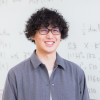
Math Seminars by Dr. Genki Ouchi and Dr. Kenta Sato
September 24 (Thu) at 16:00 - 18:10, 2020
Genki Ouchi (Special Postdoctoral Researcher, RIKEN Interdisciplinary Theoretical and Mathematical Sciences Program (iTHEMS))
Kenta Sato (Special Postdoctoral Researcher, RIKEN Interdisciplinary Theoretical and Mathematical Sciences Program (iTHEMS))[Talk 1] (16:00 - 17:00) Dr. Genki Ouchi Automorphism groups of cubic fourfolds and K3 categories In this talk, I would like to talk about symmetries of algebraic varieties, especially cubic fourfolds and K3 surfaces. It is known that symmetries of cubic fourfolds and K3 surfaces are related to sporadic finite groups as Mathieu groups and Conway groups in both algebraic geometry and string theory. Relations between cubic fourfolds and K3 surfaces are studied in the context of derived categories, Hodge theory and so on. I would like to explain the direct relation among symmetries of cubic fourfolds and K3 surfaces via their derived categories. [Talk 2] (17:10 - 18:10) Dr. Kenta Sato An algebraic approach to the four color theorem The four color theorem states that, given any separation of a plane into contiguous regions, no more than four colors are required to color the regions. Although this theorem was already proved about 40 years ago, another proof without using a computer is not found still now. In this talk, I will introduce an algebraic approach to this theorem, which states that a conjecture about singularities of algebraic varieties implies the four color theorem. In particular, I would like to focus on the connection of three different fields in mathematics: graph theory, convex geometry and algebraic geometry. *Detailed information about the seminar refer to the email.
Venue: via Zoom
Event Official Language: English
-
Seminar
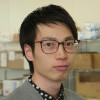
Phase Transitions in Biological Systems
September 23 (Wed) at 10:00 - 11:00, 2020
Kyosuke Adachi (Special Postdoctoral Researcher, RIKEN Interdisciplinary Theoretical and Mathematical Sciences Program (iTHEMS) / Special Postdoctoral Researcher, Nonequilibrium Physics of Living Matter RIKEN Hakubi Research Team, RIKEN Center for Biosystems Dynamics Research (BDR))
Biological systems are built hierarchically by DNA, proteins, cells, tissues, organs, individuals, etc. Recent experiments have clarified the existence of interesting mesoscale phenomena inside cells, where the concept of condensed matter physics such as phase transition can be useful in its understanding. For example, interacting nucleosomes in a chromatin chain can cause the mega-base scale structural change, and sub-micron scale dense droplets of proteins/mRNAs can appear through phase separation. In this talk, I will discuss our recent topics: (i) structural transition of a chromatin with epigenetic marks, (ii) intracellular wetting of phase-separated droplets, and (iii) spontaneous aggregation of self-propelled individuals.
Venue: via Zoom
Event Official Language: English
-
Workshop

The 2nd Heidelberg-Kyoto-RIKEN Workshop, Medicine and Math
September 18 (Fri) - 19 (Sat), 2020
Tetsuo Hatsuda (Program Director, RIKEN Interdisciplinary Theoretical and Mathematical Sciences Program (iTHEMS))
Takashi Sakajo (Senior Visiting Scientist, RIKEN Interdisciplinary Theoretical and Mathematical Sciences Program (iTHEMS) / Senior Visiting Scientist, Prediction Science Laboratory, RIKEN Cluster for Pioneering Research (CPR) / Professor, Division of Mathematics and Mathematical Sciences, Graduate School of Science, Kyoto University)
Motomu Tanaka (Professor, Physical Chemistry of Biosystems, Heidelberg University, Germany / Professor, Center for Integrative Medicine and Physics, Kyoto University Institute for Advanced Study (KUIAS))For more information, please refer to the related links.
Venue: via Online
Event Official Language: Japanese
-
Seminar
Eco-evolutionary dynamics with novel mutations
September 16 (Wed) at 10:00 - 11:00, 2020
Hye Jin Park (Junior Research Group Leader, Statistical physics of ecology and evolution group, Asia Pacific Center for Theoretical Physics, Republic of Korea)
Evolution is driven by individual birth and death that are determined by interactions between individuals. Hence studying interactions is crucial to understand the population evolution. However, traditional approaches dealt with those interaction structures are given while spontaneous random mutations can generate new interactors. We considered “mutant interactors,” which lead to new interactions between the residents and invading mutants that can drive the population away from the previous equilibrium and lead to changes in the population composition. Thus, first, we investigated the changes in the population size induced by mutant interactors[1]. And then, we applied this approach to answer the question about relationships between species[2]: Why is cyclic dominance so rare?
Venue: via Zoom
Event Official Language: English
-
Seminar
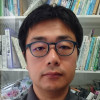
Singular point implies coexistence in adaptive dynamics
September 9 (Wed) at 10:00 - 11:00, 2020
Masashi Tachikawa (Visiting Scientist, RIKEN Interdisciplinary Theoretical and Mathematical Sciences Program (iTHEMS) / Associate Professor, Institute for Frontier Life and Medical Sciences, Kyoto University)
Adaptive dynamics is a relatively new mathematical framework for studying evolution(~1990s). Under the influence of the mathematical ecology and the game theory, adaptive dynamics considers the effect of resident populations on the fitness landscape. As a result, it explains a possible mechanism of evolutionary branching. In this talk, I introduce adaptive dynamics and Pairwise Invasibility Plot (PIP) analysis, a standard method for understanding the adaptive dynamics. Then, I propose a new approach to analyze the adaptive dynamics which enable us to understand higher dimensional systems than PIP does.
Venue: via Zoom
Event Official Language: English
-
Seminar

Maximal Regularity and Partial Differential Equations
September 8 (Tue) at 16:00 - 18:10, 2020
Ken Furukawa (Postdoctoral Researcher, Prediction Science Laboratory, RIKEN Cluster for Pioneering Research (CPR))
The theory of maximal regularity is a powerful tool to get solutions having the best regularity to linear partial differential equations (PDEs) of parabolic type. The theory is also applicable to show well-posedness of various non-linear PDEs. In the first part, We introduce the history of the development of the theory of maximal regularity and the way to apply non-linear PDEs. In the second part, We give some applications to PDEs, e. g. the primitive equations, the Navier-Stokes equations, and elliptic equations with dynamic boundary conditions. *Please contact Keita Mikami's mail address to get access to the Zoom meeting room.
Venue: via Zoom
Event Official Language: English
-
Seminar
Potential Toolkit to Attack Nonperturbative Aspects of QFT -Resurgence and related topics-
September 7 (Mon) - 25 (Fri), 2020
Aleksey Cherman (University of Minnesota, USA)
Gerald Dunne (University of Connecticut, USA)
Mithat Unsal (North Carolina State University, USA)
Toshiaki Fujimori (Keio University)
Yasuyuki Hatsuda (Rikkyo University)
Masazumi Honda (Assistant Professor, Yukawa Institute for Theoretical Physics, Kyoto University)
Okuto Morikawa (Ph.D. Student, Kyushu University)
Naohisa Sueishi (Nagoya University)
Masahito Yamazaki (Kavli Institute for the Physics and Mathematics of the Universe (Kavli IPMU), The University of Tokyo)Recently, there have been significant developments in theoretical techniques/frameworks to tackle non-perturbative aspects of quantum field theory (QFT) such as the resurgence theory, the Lefschetz thimble method, ’t Hooft anomaly matching, and novel lattice setups. Such developments are still growing very rapidly and making fruitful connections not only among physicists involved in fields with broad energy scales but also with mathematicians. These developments would enable us to unveil rich and exciting physics of QFT in the non-perturbative regime. It is of primary importance to hold a workshop for researchers in various fields related to the topics to get together and overview/share the recent progresses, to discuss future directions, and to seek for possible new collaborations bridging various fields of physics/mathematics. For more information, please see on the related link.
Venue: YITP (Kyoto University), Zoom, and Mozilla hubs
Event Official Language: English
-
Seminar

The hitch-hiker’s guide to the concept of adaptive dynamics
September 2 (Wed) at 10:00 - 10:30, 2020
Ryosuke Iritani (Research Scientist, RIKEN Interdisciplinary Theoretical and Mathematical Sciences Program (iTHEMS))
Adaptation is of multi-causality, composed of mutation and selection processes. I will talk about how we model adaptation on the basis of the adaptive dynamics framework. This is a very quick, conceptual talk, rather than heavily mathematical, to draw attention from more people.
Venue: via Zoom
Event Official Language: English
-
Seminar
Geometric Perspective for the Theory of Hydrodynamic Limits
August 31 (Mon) - September 1 (Tue), 2020
Makiko Sasada
Kenichi Bannai (Professor, Faculty of Science and Technology Department of Mathematics, Keio University)This is a series of lectures on "Geometric Perspectives for Fluid Dynamic Limit Theory" by the following speakers: [DAY 1: Aug 31] Dr. Makiko Sasada (University of Tokyo) [DAY 2: Sept 1] Prof. Kenichi Bannai (Keio University) Abstract: One of the fundamental problems in the natural and social sciences is to explain macroscopic phenomena that we can observe from the rules governing the microscopic system giving rise to the phenomena. Hydrodynamic limit provides a rigorous mathematical method to derive the deterministic partial differential equations describing the time evolution of macroscopic parameters, from the stochastic dynamics of a microscopic large scale interacting system. In the article "Topological Structures of Large Scale Interacting Systems via Uniform Locality" joint with Yukio Kametani, we introduce a general framework encompassing a wide variety of interacting systems in order to systematically investigate various microscopic stochastic large scale interacting systems in a unified fashion. In particular, we introduced a new cohomology theory called the uniformly local cohomology to investigate the underlying geometry of the interacting system. Our theory gives a new interpretation of the macroscopic parameters, the role played by the group action on the microscopic system, and the origin of the diffusion matrix associated to the macroscopic deterministic partial differential equation obtained via the space-time scaling limit of the microscopic system. The purpose of the series of lectures is to introduce to the audience the theory of hydrodynamic limits, especially the relation between the macroscopic observables and the microscopic interacting system. We then explain our new perspective of how geometry comes into play in investigating the interacting system, and introduce the ideas and results of our article. *Detailed information about the seminar refer to the email.
Venue: via Zoom
Event Official Language: English
-
Seminar

Modeling biological timing
August 26 (Wed) at 10:00 - 11:00, 2020
Gen Kurosawa (Senior Research Scientist, RIKEN Interdisciplinary Theoretical and Mathematical Sciences Program (iTHEMS))
Under stay-at-home situation, some of you may suffer from sleep disorder. Efficacy of a drug often depends on the timing of its prescription. We know this fact about our "timing", but we don't know why. This time, I wish to introduce two big mysteries in regard to biological timing. First is our internal daily clock. In general, biochemical process is believed to accelerate with temperature. In contrast, the period of our daily clock, made up of biochemical reactions is somehow stable to temperature. The prediction from simpler biochemical mathematical model, and its experimental verification will be presented. Second is hibernation. During winter, some birds and mammals decrease drastically their body temperature possibly to decrease their energy expenditure. Many studies about hibernation have been conducted for many years. However, basic mechanisms of hibernation (e.g. how the duration of hibernation is determined?) are largely unknown. Recently, we started to investigate body temperature time-series of hibernating hamsters over 100 days in the collaboration with experimental biologists. Preliminary results will be presented.
Venue: via Zoom
Event Official Language: English
-
Special Lecture
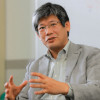
Tetsuo Hatsuda × Yoshinori Ohsumi × Sayaka Oki Online Discussion: "The Usefulness of 'Useless' Knowledge" Presented by iTHEMS & academist
August 22 (Sat) at 13:00 - 15:30, 2020
Tetsuo Hatsuda (Program Director, RIKEN Interdisciplinary Theoretical and Mathematical Sciences Program (iTHEMS))
Yoshinori Ohsumi (Cell Biology Center, Institute of Innovative Research, Tokyo Institute of Technology)
Sayaka Oki (Graduate School of Economics, Department of Socio-Economic System, Nagoya University)学問の世界で大切なのは、研究者の「なぜ」「不思議だな」という好奇心です。研究者は自らの好奇心をもとに想像力を膨らませ、さまざまな仮説を立て、それを実験、観測、調査で検証し、最終的には理論的に体系づけていきます。このような基礎研究で得られた知識は、私たちの生活に直接「役に立つ」ものではありません。しかし、5年、10年といった期間ではなく、100年、1000年単位で考えると、基礎研究は確実に世の中の役に立ち、私たちはその恩恵にあずかっています。 現在、国内外の大学や研究機関には、企業の経営戦略からきている「選択と集中」の考えが入ってきており、好奇心に基づいた研究を進めることが難しくなっています。令和時代において、私たちはどのように基礎研究を継続させていくことができるのでしょうか。今回のイベントでは、各分野で活躍する3名の研究者にお越しいただき、登壇者の一人でもある初田哲男氏監訳の書籍タイトル『「役に立たない」科学が役に立つ』をテーマとした議論を進めていきます。 13:00-13:05 Opening 13:05-14:05 Topics 14:10-15:20 Panel Discussion 15:20-15:30 Summary Capacity: 1,000 people Participation fee: Free of charge Target audience: everyone is welcome to attend Organized by iTHEMS and Academist The URL for Zoom will be sent to you after you register for the event. For more details and registration, please click on the link from "Related Links".
Venue: via Zoom
Event Official Language: Japanese
-
Seminar
Lefschetz-thimble inspired analysis of the Dykhne–Davis–Pechukas method and an application for the Schwinger Mechanism
August 21 (Fri) at 13:00 - 14:30, 2020
Takuya Shimazaki (Researcher, Hadron Theory Group, The University of Tokyo)
Dykhne–Davis–Pechukas (DDP) method is a common approximation scheme for the transition probability in two-level quantum systems, as realized in the Landau–Zener effect, leading to an exponentially damping form comparable to the Schwinger pair production rate. We analyze the foundation of the DDP method using a modern complex technique inspired by the Lefschetz-thimble method. We derive an alternative and more adaptive formula that is useful even when the DDP method is inapplicable. As a benchmark, we study the modified Landau–Zener model and compare results from the DDP and our methods. We then revisit a derivation of the Schwinger Mechanism of particle production under electric fields using the DDP and our methods. We find that the DDP method gets worse for the Sauter type of short-lived electric pulse, while our method is still a reasonable approximation. We also study the Dynamically Assisted Schwinger Mechanism in two methods.
Venue: via Zoom
Event Official Language: English
115 events in 2020
Events
Categories
series
- iTHEMS Colloquium
- MACS Colloquium
- iTHEMS Seminar
- iTHEMS Math Seminar
- DMWG Seminar
- iTHEMS Biology Seminar
- iTHEMS Theoretical Physics Seminar
- Information Theory SG Seminar
- Quantum Matter Seminar
- ABBL-iTHEMS Joint Astro Seminar
- Math-Phys Seminar
- Quantum Gravity Gatherings
- RIKEN Quantum Seminar
- Quantum Computation SG Seminar
- Asymptotics in Astrophysics SG Seminar
- GW-EOS WG Seminar
- DEEP-IN Seminar
- NEW WG Seminar
- Lab-Theory Standing Talks
- QFT-core Seminar
- STAMP Seminar
- QuCoIn Seminar
- Number Theory Seminar
- Academic-Industrial Innovation Lecture
- Berkeley-iTHEMS Seminar
- iTHEMS-RNC Meson Science Lab. Joint Seminar
- RIKEN Quantum Lecture
- Theory of Operator Algebras
- iTHEMS Intensive Course-Evolution of Cooperation
- Introduction to Public-Key Cryptography
- Knot Theory
- iTHES Theoretical Science Colloquium
- SUURI-COOL Seminar
- iTHES Seminar
